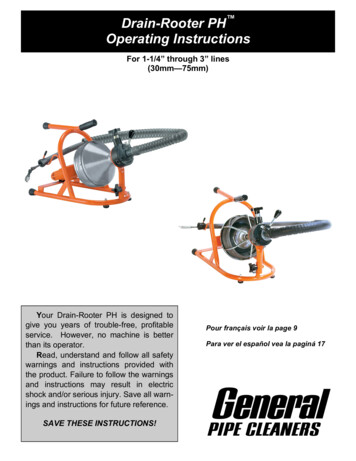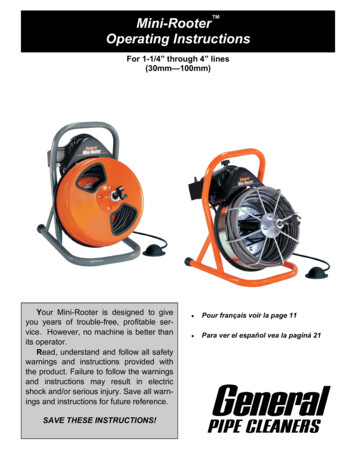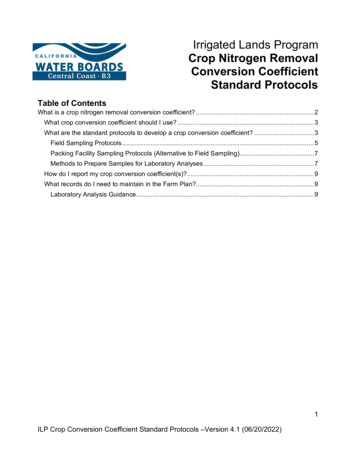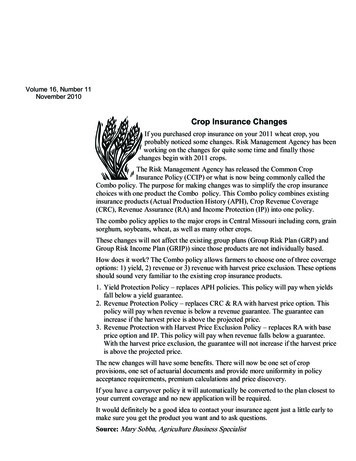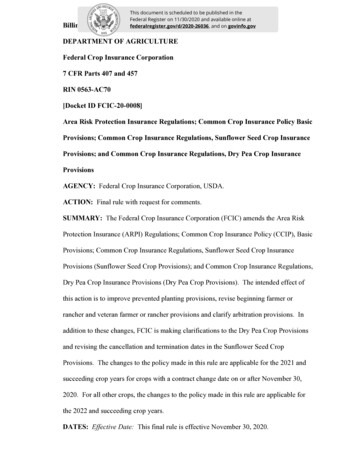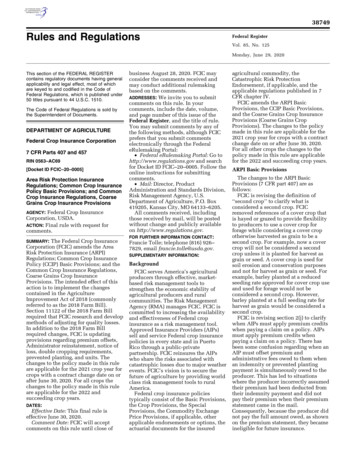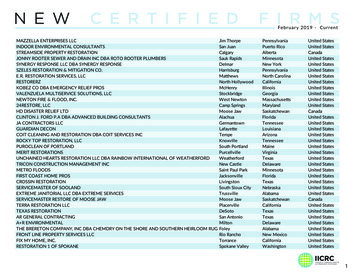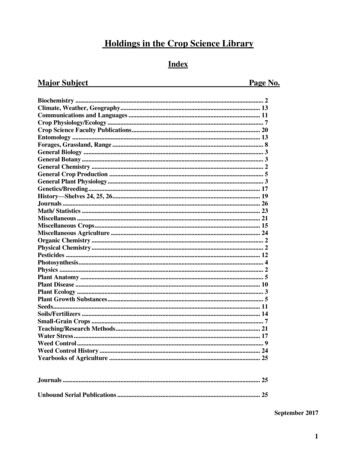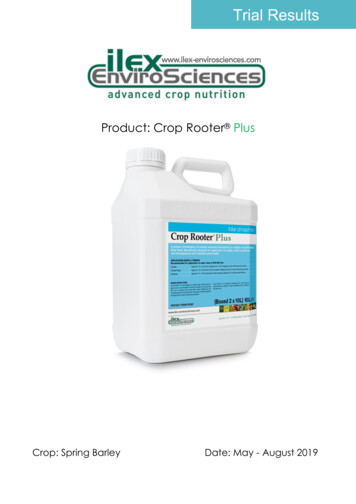
Transcription
Trial ResultsProduct: Crop Rooter PlusCrop: Spring BarleyDate: May - August 2019
Page 2 of 6Table of ContentsTable of Contents . 2Introduction . 3Objectives . 3Trial Methodology . 3Data Collection . 3Results . 4Conclusion . 4Product Specification . 4Acknowledgements . 4Figure 1.0 Rooting benefits. 5Figure 2.0 Quality and Yield benefits . 6
Page 3 of 6IntroductionCrop Rooter Plus is new and novel foliar phosphite formulation which is designed to enhance cropdevelopment though the stimulation of denser and more developed root systems to penetratedeeper through the soil profile.The following document summaries the results of a replicated field trial designed conducted by NIABTAG to assess the performance and potential benefits of using spring applications of CropRooter Plus to increase rooting capacity of crops - a recognised to benefit to aid recovery fromharsh winter conditions such as late drilling into wet and cold seedbeds, slow seedling emergence,drought and soil profile lift.ObjectivesTo evaluate the impact of Crop Rooter Plus on the root structure compared to the untreated crop.To evaluate the impact of Crop Rooter Plus on crop yield and quality parameters compared to theuntreated crop.To evaluate if spring sown cereals would benefit from applications of Crop Rooter Plus.Trial MethodologyField trials were conducted by NIAB TAG - an independent accredited testing facility - to evaluatethe performance and impact of Crop Rooter Plus applied to spring barley [variety RGT Planet]. Foliarapplications were made to replicated plots of 24m2 using conventional spraying equipmentcommonly used for formal field trials.Treatments were applied as follows:Untreated: Standard pesticide and nutrition regime.Treatment 1: As Untreated plus Crop Rooter Plus @ 1.50 L/Ha @ crop growth stage 19 BBCH [A] and30-31 BBCH [B].Treatment 2: As Treatment 1 plus Crop Rooter Plus @ 1.0 L/Ha @ crop growth stage 40 BBCH [C].Letters A, B, C represent the application timing for Crop Rooter Plus treatments.Application dates were as follows:A - 26th April 2019 @ 19 BBCHB - 21st May 2019 @ 30-31BBCHC - 31st May 2019 @ 40 BBCHData CollectionObservations were conducted to evaluate the following:NDVI [Normalised Difference Vegetation Index] on the following dates: 7th, 17th and 31st May 2019,18th June 2019 and 2nd July 2019.Crop cover [percentage ground cover of the crop] on the following dates: 7th, 17th and 31st May2019, 18th June 2019 and 2nd July 2019.Tiller counts per square metre on 17th May 2019Root biomass expressed in grams on 17th May 2019Root length expressed in cm on 17th May 2019Crop yield expressed in T/Ha. Harvest date: 12th August 2019Hectolitre weight expressed in Kg/Hl. Harvest date: 12th August 2019
Page 4 of 6ResultsFigure 1.0 demonstrates the benefits from applying Crop Rooter Plus at 1.5L/Ha at growth stage 19BBCH to root biomass and length. Although not statistically significant, compared to the untreatedplants those treated with Crop Rooter Plus produced 10% less tillers with a root structure weighing 8%less and 17% longer roots. Fewer tillers but a denser and longer root structure is beneficial in theoptimisation of nutrient uptake and improved establishment.Figure 2.0 demonstrates a 4% increase in yield despite a 10% reduction in tiller numbers followingtreatment with Crop Rooter Plus compared to the untreated. Additionally, the quality of theharvested grain following 4.0L/Ha of Crop Rooter Plus provided a 0.3% increase in hectolitre weight.ConclusionIn this replicated trial, Crop Rooter Plus increased root growth compared to the untreated plots byan average of 17%. Such increases would allow the roots of treated plants to have greater access tomoisture and nutrients deeper within the soil, which is of particular benefit during unfavourableconditions at drilling, emergence and early growth.Additionally, a yield increase of 4.48% was recorded in treated plots, even though less tillers whereproduced against untreated plants. Strong and productive tillers are vital in maximizing efficientproduction of grains. Unproductive tillers are recognized to hinder yield potential. This may also havepositively impacted specific grain weight, which was also increased in treated plots.Summary of Trial StatisticsLSD P .05CVTiller Count44.2113.13Root Biomass15.40421.48Root Length2.54311.88Yield0.29862.55HLW0.490.44Product SpecificationNitrogen ------------------4% w/v*Phosphorus (as -----28% w/vPotassium(as -----8% w/vAdded amino acids and seaweed concentrate-----------10% w/v(40g/l)(280 g/l)(80 g/l)(100g/l)*14% w/v Phosphorus Pentoxide (P2O5) present in the form of phosphite (PO3)14% w/v Phosphorus Pentoxide (P2O5) present in the form of phosphate (PO4)AcknowledgementsNIAB TAGHuntingdon RoadCambridgeCB3 OLEhttps://www.niab.com/
Figure 1.0 - Rooting benefitsPage 5 of 6
Figure 2.0 - Quality and Yield benefitsPage 6 of 6
treatment with Crop Rooter Plus compared to the untreated. Additionally, the quality of the harvested grain following 4.0L/Ha of Crop Rooter Plus provided a 0.3% increase in hectolitre weight. Conclusion In this replicated trial, Crop Rooter Plus increased root growth compared to the untreated plots by an average of 17%.


